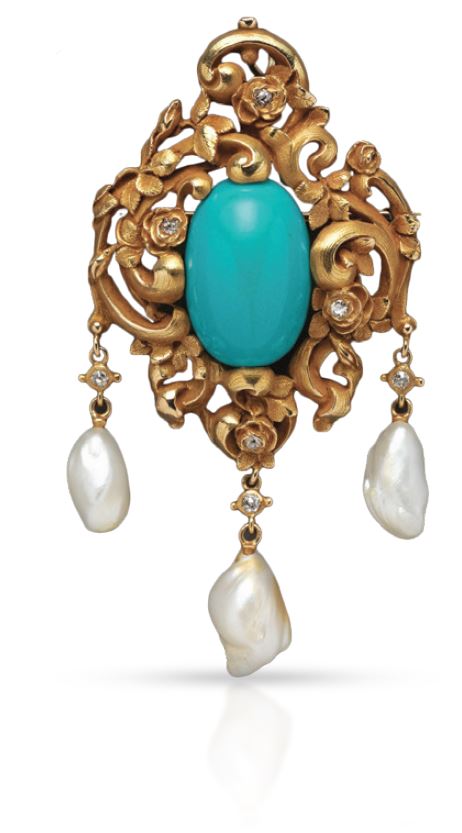TurquoiseAncient Egyptians called turquoise “mefkat,” which also means “joy” and “delight.” Turquoise is one of the world’s most ancient gems.
Archaeological excavations revealed that the rulers of ancient Egypt adorned themselves with turquoise jewelry, and Chinese artisans carved it more than 3,000 years ago. Turquoise is the national gem of Tibet, and has long been considered a stone that guarantees health, good fortune and protection from evil. The gem’s name comes from the French expression “pierre turquoise,” or “Turkish stone.” The name, which originated in the 13th century, reflects the fact that the material probably first arrived in Europe from Turkish sources. Color Turquoise ranges from blue to green in color. The most
prized color is an even, intense medium blue. Generally pure saturated blue shades are the most valuable. Clarity Turquoise is semi-translucent to opaque. It might have
veins of matrix running through it (matrix is a remnant of its surrounding rock). The most valuable turquoise is an even medium blue with no matrix and the ability to take a polish. Source Turquoise is found in only a few places on Earth: dry
and barren regions where acidic, copper-rich ground water seeps downward and reacts with minerals. The traditional source for the top color, sometimes described as robin’s egg blue or sky blue, is the Nishapur district of Iran, the country formerly known as Persia. So, quite often, you’ll hear people in the trade call turquoise of this beautiful color “Persian blue,” whether or not it was actually mined in Iran. Another famous producer of high-quality turquoise that rivals the famous Persian material comes from the Sleeping Beauty mine in New Mexico, U.S. Treatments Some turquoise is treated to improve its durability,
appearance and polish. Turquoise can be dyed or chemically treated by adding an epoxy or acrylic resin for increased hardness and enhanced color. |
|
All information are courtesy of Gemological Institute of America (GIA). OR DIAMOND are not affiliated with, connected to, or associated with GIA other than selling diamonds and gemstones graded by GIA and have GIA trained staff gemologist and accredited jewelry professional on site.






